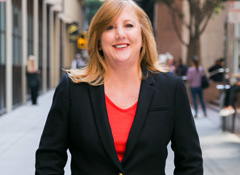Influencer marketing: what’s next in 2017?
Last year, influencer marketing came of age in terms of its power and popularity. According to Matt Donegan, MD at social influencer marketing platform Social Circle, 2017 will be the year that brands really get to grips with it and strategically create their own social circle of influencers. Here, he shares five key trends for the New Year.
Last year saw the rise of social influencer marketing, and it came with some challenges. Now that brands have gotten their head round what it is, 2017 will be the year of taking their influencer campaigns a step further. Here are five trends that we, at Social Circle, have identified:
Long-term partnerships
Brands will move away from one-off social influencer campaigns driving awareness of a specific product or service. At the end of 2015, L’Oreal announced their ‘beauty squad’ of five influencers, which, according to the brand’s UK general manager, Adrien Koskas, will “shift the industry towards something that is more genuine”.
2017 will see more of these strategic and long-term partnerships allowing both brands and influencers to engage audiences in a more considered and targeted way.
A professionalisation of the industry
Agencies tend to launch specialist practices or divisions which are in fact just individuals, supported by the same team, without much experience of delivering influencer marketing campaigns. Sometimes, brands that have worked on one campaign themselves are more versed than the agency they are trusting.
This year, there will be increasingly less middle men and, hopefully, more people with direct hands-on experience that can deliver solid advice and professional campaign management.
A focus on the figures
I’ll admit it, social influencers were a bit of a buzzword in 2016. Everyone suddenly knew who Zoella was and everyone wanted to work with her. Advertisers didn’t shy away from any cost to have their brand endorsed. However, they soon realised that it’s not about the number of followers but the engagement when it comes to working with influencers.
As an example, brands could pay Justin Bieber a fortune for a Twitter post but will it be seen by the right people? People you actually want to engage with? I doubt it. In 2017, brands will move towards analytics and measurement in order to aim for the most engaged audience rather than just looking at number of followers.
An understanding of the power of smaller and micro influencers
A micro influencer can be anyone with more than 1,000 followers. This doesn’t sound like many, but if you’re a brand that wants to engage a niche audience then those 1,000 followers can be exactly the people you want to target.
For example, a brand that sells diving equipment might want to work with an influencer that specialises on diving how-to videos rather than partnering with a widespread famous influencer. Working with more than one influencer to target specific audiences will on one hand be more cost-effective and on the other achieve higher engagement rates.
Brands will create and own their individual ‘social circles’
This point brings me back to my L’Oreal example. The brand hand-picked a group of five influencers to represent them and I’m almost certain they will add to that group over time. 2017 will see a trend towards brands creating their own ‘social circles’ and utilising them more strategically resulting in long term brand ambassador partnerships.
- Matt Donegan is MD of social influencer marketing platform Social Circle
On Wednesday 25 January, be sure to listen in to Gorkana’s first webinar of the year, The Rise of the micro-influencer. You’ll hear Francisco Ascensão, CEO of micro-influencer platform Youzz, as well as a top micro-influencer, discuss the best way brands and PRs can engage in this form of communications. Register here.
Gorkana launched a Guide to Influencer Marketing White Paper in November, which  seeks to find out how an “influencer” is defined, what impact they have on PR, whether an influencer campaign can really be determined as earned media and what PRs need to think about before trying to find the right person who can positively impact their brand.
seeks to find out how an “influencer” is defined, what impact they have on PR, whether an influencer campaign can really be determined as earned media and what PRs need to think about before trying to find the right person who can positively impact their brand.
Download your free copy here.





